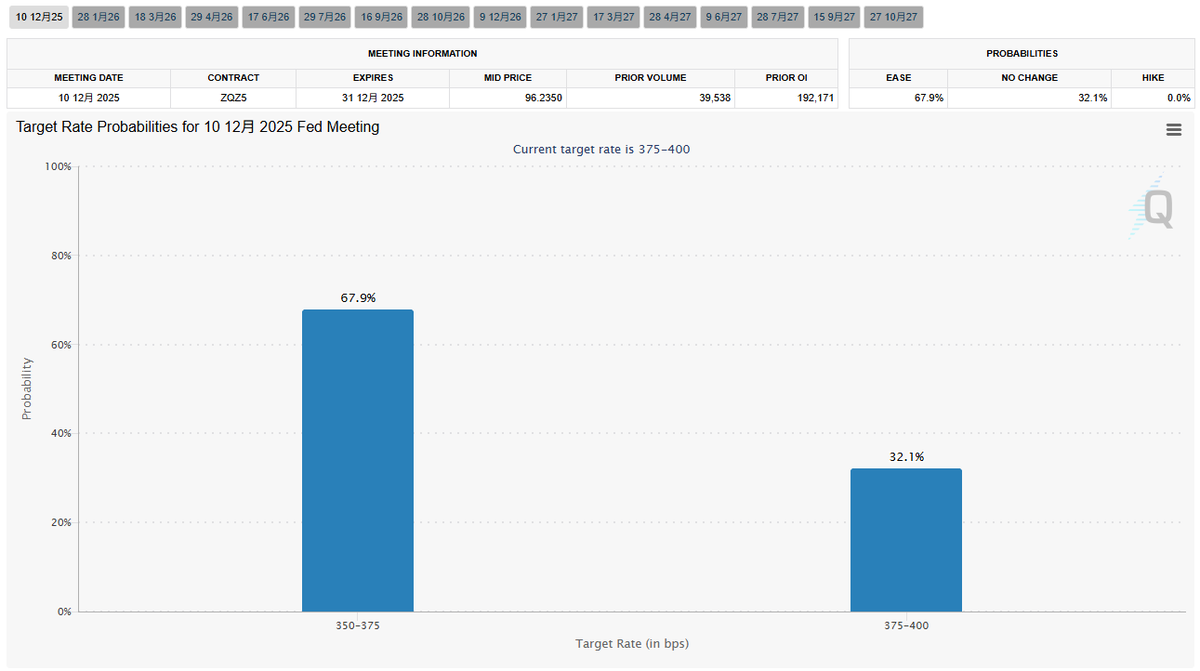Overall, the current sentiment remains optimistic. On one hand, the likelihood of the U.S. government shutdown ending by Wednesday (U.S. time) is high, which would restore liquidity. Additionally, the U.S. Supreme Court may not support Trump's tariff policies. If Trump is forced to abandon or reduce some tariffs, it would lower the risks of consumption and inflation for the market, allowing the Federal Reserve to focus more on interest rate cuts.
However, data from CME shows that expectations for a rate cut by the Federal Reserve in December have decreased from 74% last week to 68% this week. In contrast, data from Kalshi indicates that predictions for a December rate cut have not only remained stable but have actually increased. It is likely that recent reports of layoffs and labor market downturns have led some investors to believe that employment data will reach the Federal Reserve's threshold, thereby prompting a rate cut.
Today, a colleague asked me whether the end of the U.S. shutdown and the gradual release of more data would be beneficial or detrimental to the market. In my personal view, labor market data is likely to worsen, which would be good for helping the Federal Reserve cut rates. Moreover, the decline in labor data is significantly related to the shutdown and may not be a long-term trend; this data should be favorable for the risk market.
Although there is no comprehensive inflation data during the shutdown, I still believe that inflation should be slightly declining. With the Supreme Court's verbal clarification regarding Trump's tariffs, it is likely that investors believe tariffs cannot be implemented directly, which may delay purchases of imported goods.
This article is sponsored by @Bitget | Save on fees, receive the most rewards, and become a VIP at Bitget


免责声明:本文章仅代表作者个人观点,不代表本平台的立场和观点。本文章仅供信息分享,不构成对任何人的任何投资建议。用户与作者之间的任何争议,与本平台无关。如网页中刊载的文章或图片涉及侵权,请提供相关的权利证明和身份证明发送邮件到support@aicoin.com,本平台相关工作人员将会进行核查。




